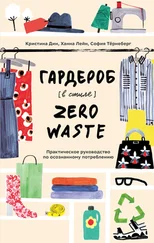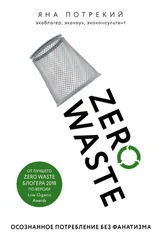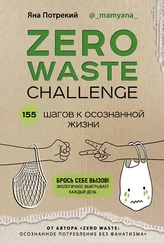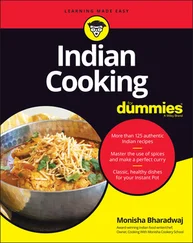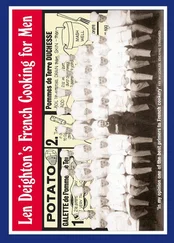 Understanding the framework of food and environment
Understanding the framework of food and environment
An estimated 30 to 40 percent of the food supply in the United States is wasted due to loss (never delivered or prepared) and waste (thrown away). That’s more than 130 billion pounds of food per year! Hard to imagine, right? Maybe not when you consider how every day, shoppers are enticed to buy food in bulk but often end up throwing away the excess. Or how, all too often, diners bag up restaurant leftovers only to let them languish in the fridge (or, worse yet, in their car’s back seat), and then throw them out, packaging and all. What do these examples have in common? Good intentions, yes. But also, unnecessary waste.
Many of us may not even realize how often we waste food, nor the impact that waste can have on our communities. When you make a concerted effort to avoid waste, you won’t be throwing away money or nutrition. Reducing your food waste has the potential to have a positive impact on your health, your budget, and the environment. This realization makes it even more convincing to work on wasting less, and that effort begins at home.
What Is Zero Waste Cooking?
Zero waste cooking is a strategy to reduce food waste. It’s about using all the food that you purchase, grow, or have access to, and leaving behind as little food and packaging as possible. It’s something to feel good about as you save money and reduce your impact on the planet.
 Zero waste cooking is not about perfection or self-righteousness. Neither is it about becoming vegetarian or eating less meat. Be wary of statements about avoiding meat and dairy when in the context of zero waste cooking. The goal of zero waste cooking is to reduce all food waste.
Zero waste cooking is not about perfection or self-righteousness. Neither is it about becoming vegetarian or eating less meat. Be wary of statements about avoiding meat and dairy when in the context of zero waste cooking. The goal of zero waste cooking is to reduce all food waste.
Zero waste cooking is about adopting a philosophy to waste less food in your household no matter what your dietary choices are (of course I still want you to make mostly healthy ones!). It’s about learning how to grocery shop more mindfully and efficiently to maximize your food and your food budget. It’s also about having a plan for the food you buy and storing food properly.
Using food and ingredients wisely
In the United States and many parts of the world, we’re blessed with an abundant food supply. We travel to grocery stores, expecting all the food and ingredients that we desire to be there. (Skip to Chapter 2to learn more about the food supply chain and where your food comes from.) We expect our apples and tomatoes to be blemish-free and our food to be fresh and appealing. We purchase what we need (and sometimes more than we need) and bring it home to store on our shelves or refrigerator or freezer. You could say, we’re a little spoiled.
To create a zero waste kitchen, you simply begin by being more thoughtful about your purchases. You then start to rethink your leftovers and plan out how you’re going to prepare every ingredient that goes into your shopping cart. You also may have some second thoughts about perfect produce, realizing that a small blemish here or there doesn’t impact the safety or nutrition of the food.
Shopping for what you need and storing it properly
Zero waste cooking focuses on shopping for what you need, not what randomly “looks good.” Grocery stores strategically set up their shelves and displays to entice you to buy more. They place seasonal items at your eye level, and companies pay a premium for the best shelf placement. But shopping only for what you need will ultimately help reduce your food waste. You’ll find lots of tips and strategies for sticking to your food budget and grocery list in Chapter 6.
A good shopping list makes trips to the grocery store more efficient. Your list should include everything you need to create meals for the next week or two. You might break your list into a big order or a few smaller orders, so think of your list as a running inventory as well. These are planned purchases that fit your budget and meal planning. Chapter 4helps you analyze what you have, what you don’t use or need, and what may be ending up in your garbage can too often. Here are a few reminders to get you started:
Use a list. Consider a digital app or keeping a running list on your smartphone.
Delay a purchase. When you see that tantalizing endcap, tell yourself to make a note and think about it for your next trip. This will eliminate an impulse buy but not deny the possibility of putting the item into your cart next time.
Don’t overspend. Have a budget in mind before you go and keep a rough total as you shop.
Choose quality over quantity. In most cases, it’s worth paying more for a high-quality food product (say, cheese) than getting a larger portion of it (more than you may need or be able to use).
Store food properly. Once you bring the food home, storing it properly helps preserve its quality and safety longer, thereby helping you reduce food waste. Chapters 4, 5, and 6offer you lots of ideas and tips for making food and ingredients last longer. You may be surprised to find out what those best-by dates really mean, or why you shouldn’t store avocadoes near bananas.
Making the most of scraps and leftovers
There are two kinds of people: those who love leftovers (usually the cooks of the house!), and those who say, meh. I hope this book inspires you to look beyond reheating a plate of turkey and mashed potatoes or a bowl of chili and instead create completely new dishes with those previously cooked ingredients.
As a wise cook once said, “Cook once; eat thrice.” Making use of leftovers, as well as doing some batch cooking, will save you both time and money. It’ll also take some of the day in, day out stress out of preparing dinner every night.
 You don’t have to eat trendy foods to eat a well-balanced zero waste diet. Avocadoes may be all the rage, but they’re not the be-all and end-all for nutrition (and they spoil rapidly). No one food holds that health halo. It’s the totality of your diet through the week that impacts your nutrition status and your environmental footprint. Healthy food doesn’t have to be fancy or expensive.
You don’t have to eat trendy foods to eat a well-balanced zero waste diet. Avocadoes may be all the rage, but they’re not the be-all and end-all for nutrition (and they spoil rapidly). No one food holds that health halo. It’s the totality of your diet through the week that impacts your nutrition status and your environmental footprint. Healthy food doesn’t have to be fancy or expensive.
The meal planning ideas in Chapters 6and 7use the concept of creating a grocery list with common ingredients that you can use in various ways through the week to make different meals.
 Some foods simply taste better the next day or two. Dishes like chilis, soups, casserole dishes, or lasagna, for instance, get even better after they sit for a while, allowing all the flavors to come together. You won’t regret making extra servings when you cook those dishes.
Some foods simply taste better the next day or two. Dishes like chilis, soups, casserole dishes, or lasagna, for instance, get even better after they sit for a while, allowing all the flavors to come together. You won’t regret making extra servings when you cook those dishes.
Adopting a Zero Waste Mindset
You probably picked up this book because you want to waste less in your kitchen and you care about the environment. The goal of the book is to help you get started and maintain a mostly zero waste lifestyle ( mostly because, hey, nobody is perfect). While Chapter 3gets into the nitty-gritty of creating a zero waste mindset, an overarching theme throughout the book is “progress, not perfection.” As you wrap your mind around the idea of wasting less food, the book addresses several things:
Читать дальше

 Understanding the framework of food and environment
Understanding the framework of food and environment Zero waste cooking is not about perfection or self-righteousness. Neither is it about becoming vegetarian or eating less meat. Be wary of statements about avoiding meat and dairy when in the context of zero waste cooking. The goal of zero waste cooking is to reduce all food waste.
Zero waste cooking is not about perfection or self-righteousness. Neither is it about becoming vegetarian or eating less meat. Be wary of statements about avoiding meat and dairy when in the context of zero waste cooking. The goal of zero waste cooking is to reduce all food waste. You don’t have to eat trendy foods to eat a well-balanced zero waste diet. Avocadoes may be all the rage, but they’re not the be-all and end-all for nutrition (and they spoil rapidly). No one food holds that health halo. It’s the totality of your diet through the week that impacts your nutrition status and your environmental footprint. Healthy food doesn’t have to be fancy or expensive.
You don’t have to eat trendy foods to eat a well-balanced zero waste diet. Avocadoes may be all the rage, but they’re not the be-all and end-all for nutrition (and they spoil rapidly). No one food holds that health halo. It’s the totality of your diet through the week that impacts your nutrition status and your environmental footprint. Healthy food doesn’t have to be fancy or expensive.